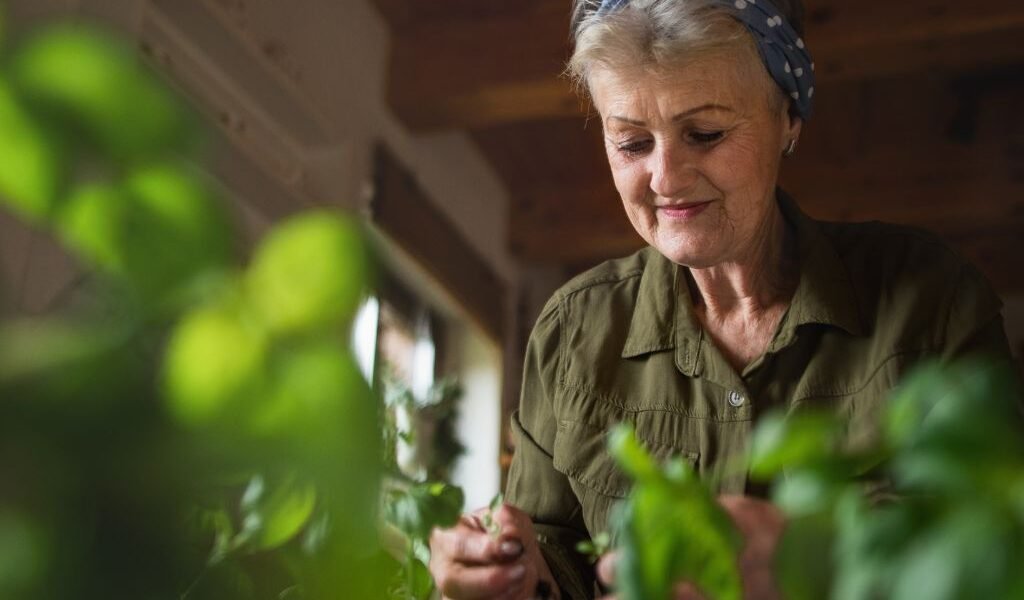Having fresh herbs at your fingertips is not only convenient, but it can also elevate your home-cooked meals to a whole new level. Growing an indoor herb garden is easier than you might think, and it doesn’t require a green thumb or a large space. Here is a step-by-step guide to creating and maintaining your own indoor herb garden.
Indoor herb gardens are a wonderful way to bring fresh flavors and greenery into your home, regardless of the season or available outdoor space. Whether you have a spacious kitchen or a small apartment, cultivating a collection of herbs indoors can provide you with a convenient supply of aromatic and flavorful ingredients for your culinary adventures. In this blog post, we will explore some popular and easy-to-grow herbs for indoor gardening.
1. Choosing the Right Herbs
The first step is to decide which herbs you want to grow. Consider the types of dishes you usually prepare and the herbs that you most often use. Some of the easiest herbs to grow indoors include basil, rosemary, thyme, chives, parsley, oregano, and mint. These herbs thrive indoors and can be harvested year-round.
2. Gathering Your Supplies
To start your indoor herb garden, you’ll need the following supplies: pots with drainage holes, potting mix, a small trowel or spoon, and your chosen herb seeds or starter plants.
Choose pots that are at least 6 inches in diameter to give your herbs room to grow. The pot’s material can affect the moisture level of your plants; for example, clay pots can absorb water and help prevent overwatering, while plastic or glazed pots retain moisture better.
Use a high-quality potting mix that is well-draining. Herbs don’t like to sit in wet soil, and a well-draining soil helps to prevent waterlogged roots.
3. Planting Your Herbs
If you’re starting from seed, sow them according to the instructions on the seed packet. Generally, seeds should be planted at a depth of about three times their diameter. If you’re using starter plants, dig a hole in the center of the pot large enough to accommodate the root ball, place the plant in the hole, and then fill in around it with potting mix.
4. Watering Your Herbs
Proper watering is key to growing healthy herbs. The amount of water your herbs need will depend on the type of herb, the size of the pot, and the humidity in your home. A good rule of thumb is to water when the top inch of soil feels dry to the touch. Avoid overwatering, which can lead to root rot.
5. Providing Light
Herbs need plenty of light to grow well. Most herbs need at least 6-8 hours of sunlight per day, so place your herb garden in a south-facing window if possible. If you don’t have a spot with enough natural light, you can supplement with a grow light.
6. Fertilizing Your Herbs
While herbs don’t require as much fertilization as other plants, they do benefit from occasional feeding. Use a liquid organic fertilizer or a slow-release granular fertilizer, and follow the package instructions for application rates.
7. Harvesting Your Herbs
Most herbs can be harvested as soon as they have enough foliage to maintain growth. To harvest, simply snip off what you need with scissors, but be careful not to remove more than one-third of the plant at a time.
8. Dealing with Pests and Diseases
Indoor herbs can sometimes be affected by pests such as aphids or spider mites. If you notice small bugs on your plants, you can usually get rid of them by washing the leaves with a mild soap solution. If your herbs develop yellow leaves or other signs of disease, they may be getting too much or too little water, or they may need more light.
9. Pruning and Maintaining Your Herbs
Regularly pruning your herbs will help them to grow bushy and full. Pinch back the tips of your herbs to encourage branching, and remove any dead or yellowing leaves.
10. Enjoying Your Herbs
The best part of having an indoor herb garden is being able to use your fresh herbs in your cooking. Fresh herbs can be used in a variety of dishes to add flavor and color. You can also dry or freeze your herbs to use later.
Growing an indoor herb garden is a rewarding project that can provide you with fresh herbs year-round. Whether you’re a seasoned gardener or a complete beginner, you can enjoy the benefits of having your own indoor herb garden with a bit of care and attention. Happy gardening!
Alert: While spices can have many beneficial properties for health, using them for medical purposes should be done under the guidance and supervision of a healthcare professional or specialist. Some spices may interact with medications or cause adverse reactions in certain individuals, and it is important to use them safely and appropriately. If you are considering using spices for a medical condition, it is important to consult with a healthcare professional before doing so.
